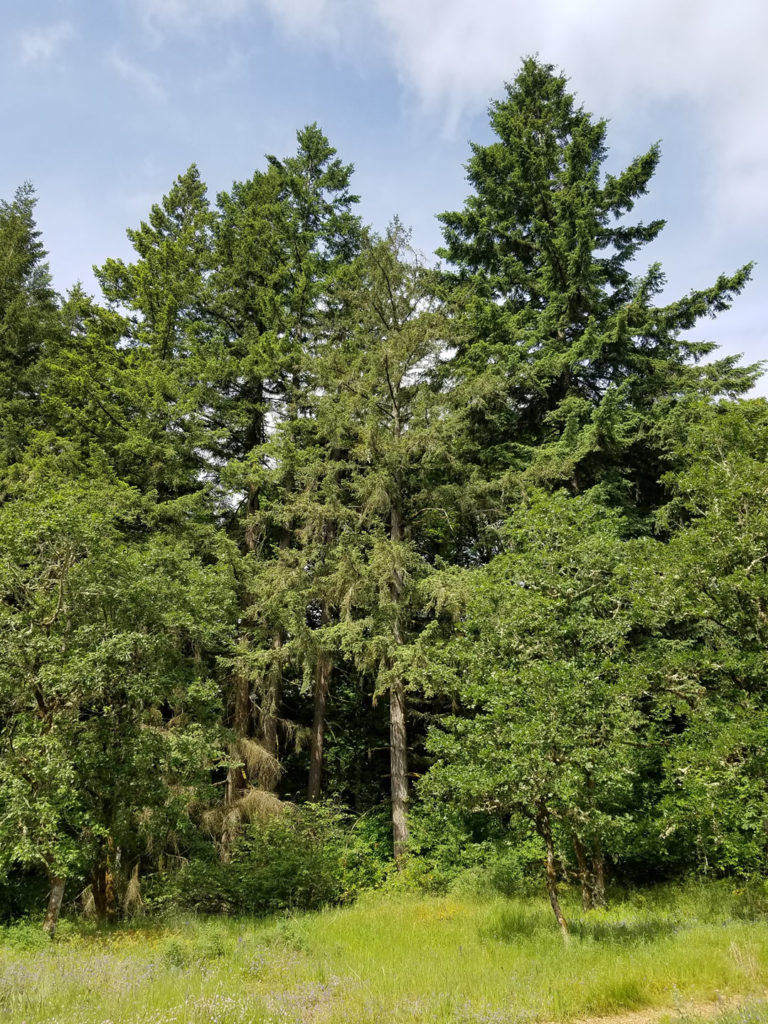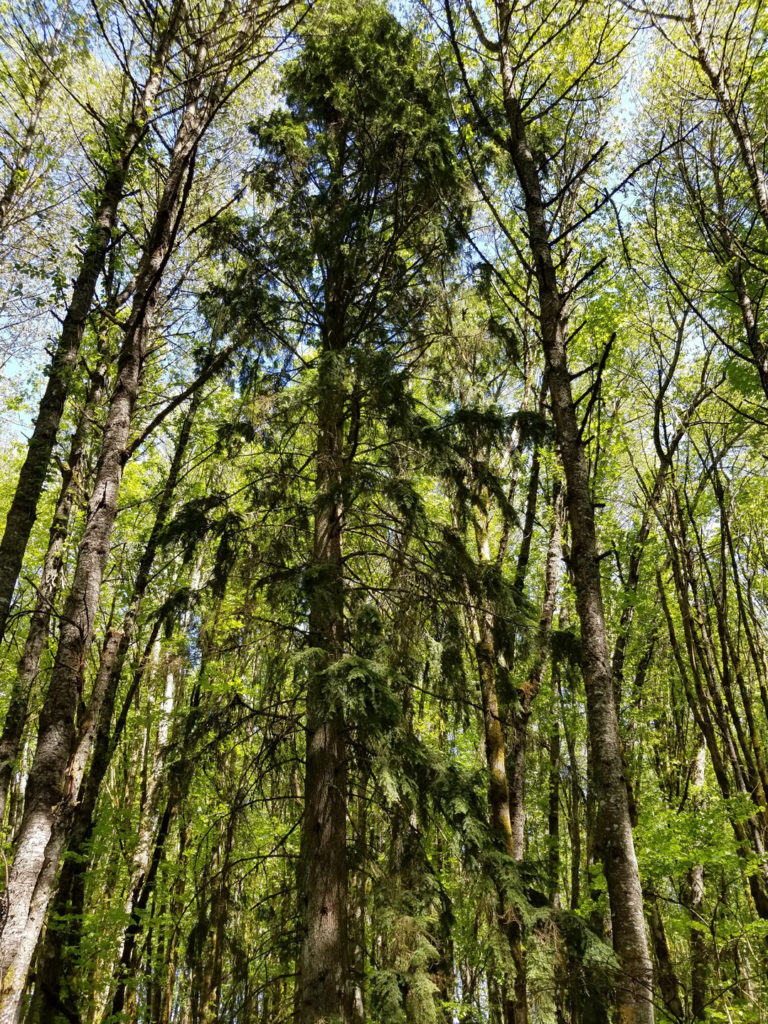Western Hemlock, Tsuga heterophylla
Pinaceae – fir, pine family.

“Tsuga” is derived from the Japanese name for hemlock. The leaves (needles, or “phylla”) of varying (“hetero”) lengths tend to be longer when horizontally positioned on a branchlet, and shorter when positioned vertically.
A high tolerance for shade and the virtue of perseverance enable western hemlock over many hundreds of years to dominate over taller and faster growing trees like Douglas-Fir in an old growth forest. The difference in shade tolerance among species explains why Hemlock seedlings are more frequent on nurse logs in the deeper shade of an old growth forest, while Douglas Fir seedlings are more frequent in openings created by fire, wind, or logging. The blunted needles are ¼ to ¾” long and whitened beneath. The small and papery cones are usually borne at the end of twigs and branchlets. The western hemlock has an elegant appearance with its fine needles gracefully drooping top shoot, and gently lowering branches. The bark of the western hemlock when made into a medicinal tea by various Northwest Native groups was used as a laxative, a wash for sore eyes or for skin sores, a remedy for sore throat, and to control hemorrhage. The pitch was used as a chest rub for children’s colds, to prevent chapping and sunburn, and as face paint when mixed with ground bark. The inner bark when boiled and pounded made a reddish paint for use on baskets, spears, and paddles. The dye also made nets invisible to fish. The wood was a good source of fire wood. The very versatile western hemlock also provided multi-branched boughs for fish traps and weirs.


Information courtesy of “The View From Springbrook Park; an Illustrated Natural History” by Ed Chinn.
Photos taken by Laura Tanz
Sponsored by Friends of Springbrook Park; Lake Oswego, OR